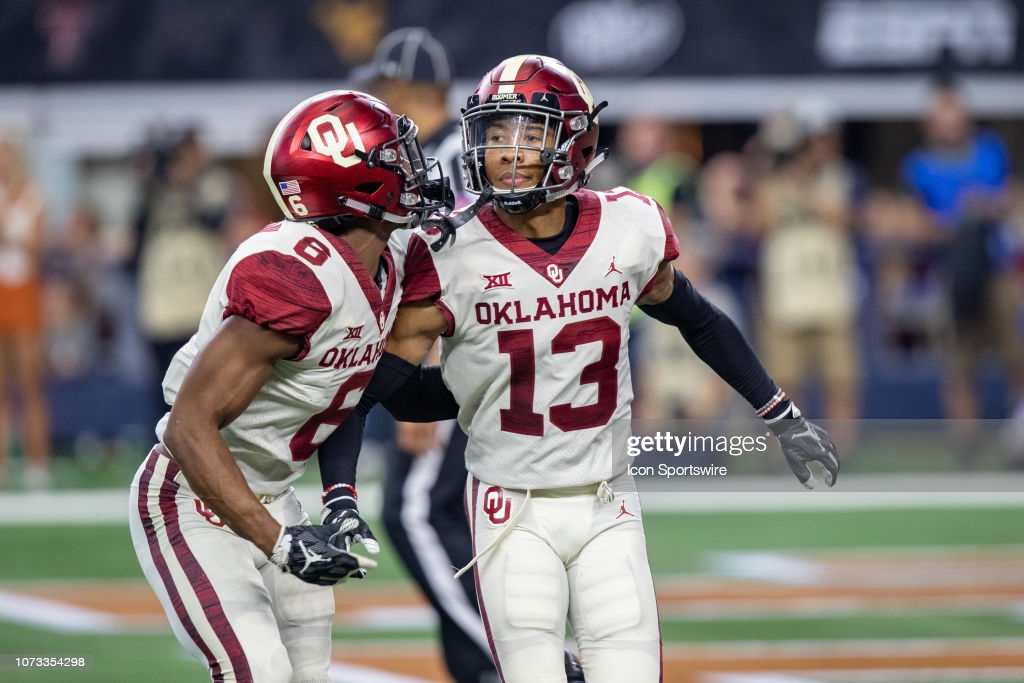With the 245th overall pick in the 2021 NFL Draft, the Pittsburgh Steelers selected Oklahoma defensive back Tre Norwood. Norwood and the Steelers’ other eight picks could be packaged up into one quick, overall grade. But why not take a detailed look at each individual pick from a number of different viewpoints, before determining a final grade for the player, and later on the entire class?
I designed this exercise to look at and give letter grades based on six specific ways to view the pick (listed below), before taking all that analysis and combining it into a final letter grade. Those five viewpoints comprise much of what goes into the draft grades consumed by so many every year after the draft.
Team Need: Does the player fill a weaker spot on the roster?
Team Fit: Does this player and his skillset fit what the team likes to do offensively and defensively?
Immediate Contributor: Will the player be able to play a big role as a rookie?
Long-Term Contributor: Will the player be a significant part of the team’s future in some capacity?
Pick Value: Did the team reach on this player? Did they pick up a steal who should have gone earlier?
Other Options: Who were the other players still on the board at that selection, both overall and at that specific position?
Overall Grade: A final mark to denote whether the selection was an overall positive one, or one that could’ve been better spent elsewhere.
Each factor doesn’t apply evenly to every pick made. For example, teams expect immediate contributions from a first round selection, while a seventh-rounder is fortunate to just make the roster.
Some factors do, though. Whether picked first overall or 259th, there will always be other options on the board to compare the player to, and steals and reaches can come from any place in the draft.
Round 7, Pick 18: Tre Norwood, DB, Oklahoma
TEAM NEED: A+
Pittsburgh entered the draft with three priority areas of need. The Steelers addressed running back in the first round, and offensive line went in Rounds 3 and 4. But to this point, the team had not addressed defensive back, after losing corners Steven Nelson and Mike Hilton and two days prior to declining the fifth-year option of safety Terrell Edmunds. Any defensive back at this point was going to earn top marks here.
TEAM FIT: C+ (Cornerback), A (Safety)
Norwood might not be a perfect fit in a lot of teams’ defenses, but he is at least a partial fit in every team’s defense because of the versatility he brings from his time at Oklahoma. Pittsburgh is closer to the former than the latter, and Norwood brings his top skill — ball skills — that will make him fit at home lined up as a safety whenever the team goes to zone. His ability to come downhill and help in run defense only further helps his fit as a safety for the Steelers, and boosts his case as a fit in nickel.
Norwood is not as skilled in coverage closer to the line in zone or man, though, which makes his fit a little more suspect initially as a corner. I don’t want to split grades and haven’t had to yet in any of these, but in Norwood’s case I will make an exception given his versatility and likelihood of playing multiple positions as a rookie.
IMMEDIATE CONTRIBUTOR: B-
Norwood is far from a sure thing to make the roster. He faces plenty of competition among corners (Shakur Brown, James Pierre, Justin Layne) and safeties (Antoine Brooks Jr., Miles Killebrew, Donovan Stiner), and those aren’t all of the names competing for spots on the 53-man.
If he earns a spot, though, expect him to contribute more than a normal seventh-round rookie. Norwood’s versatility is key yet again. Pittsburgh could line him up at either safety spot to spell a starter, or when bringing either safety down closer to the box. He can play all over the field at different corner spots in a dime defense. Honestly, based on talent, I’m not sure Norwood isn’t already Pittsburgh’s top backup safety and third-best cornerback. Whether he convinces the team of that or plays up to it in camp is a key question. But if Norwood makes the roster, it’s hard to keep someone who can fill so many different spots off the field, and he would play on special teams.
LONG-TERM CONTRIBUTOR: C+
Norwood has a definite ceiling. He can contribute right away because of the lack of depth in Pittsburgh’s secondary. But long-term, he is going to be hard-pressed to fight his way into the starting lineup, and will face competition every season as the Steelers work to keep or get their secondary to its level from the last two seasons.
Even if he is unlikely to rise to the starting lineup on a permanent basis, Norwood brings enough to the table to be contributor for more than a year or two in the team’s secondary. His (here’s that word again) versatility is invaluable, and his ball skills can be a major asset to the team’s secondary. It’s entirely possible Norwood becomes the team’s fifth defensive back, primary backup safety, or even No. 3 corner if he can win a roster spot and improve his weaknesses as a rookie.
PICK VALUE: B
This is right around where Norwood was projected to go, if he was hearing his name in the draft. Norwood was a late Day 3 pick, and he provides decent value in the middle of the seventh round. There was a chance he went undrafted, as well, so Pittsburgh’s selection ensures they get a versatile defender in camp, rather than having to win a bidding war for him as a priority UDFA.
OTHER OPTIONS: B
There are other players who certainly brought appeal as picks to end the draft. Among those actually drafted were Shaka Toney (EDGE), Grant Stuard (OLB), and Kawaan Baker (WR), and a deep UDFA class was headlined by Dylan Moses and Justin Hilliard (LB), Sage Surratt, Cade Johnson, and Tamorrion Terry (WR), and Marvin Wilson (DT). There was no shortage of UDFAs that were worth a flier in the seventh, enough to write multiple paragraphs. But Pittsburgh had already earlier addressed the positions of most of the highest-value players remaining, and Norwood compared evenly or favorably with almost all of them.
Among defensive backs specifically, Norwood was a clear better option than almost every corner remaining. Pittsburgh even signed one of his main competitors, Shakur Brown, as a UDFA. Safety had Ar’Darius Washington remaining, who was worth a mid-Day 3 pick, but Norwood’s versatility compares him evenly.
OVERALL GRADE: B
It doesn’t have the same level of value or significant upside that the team’s prior pick, Quincy Roche, did. But the selection of Norwood is a positive one for the Steelers in the seventh round, and one that can pay dividends for the team if he is able to find a home on the 53-man roster either this season, or after a year of work on the practice squad. Finding players who bring some very positive traits — in Norwood’s case, his ball skills and ability to play corner and safety — is always a smart use of resources late, and getting him in the seventh round is even better.








